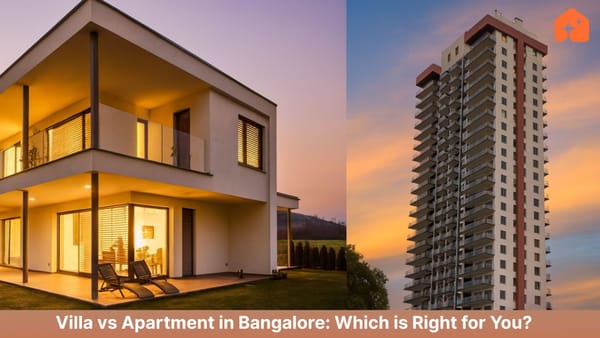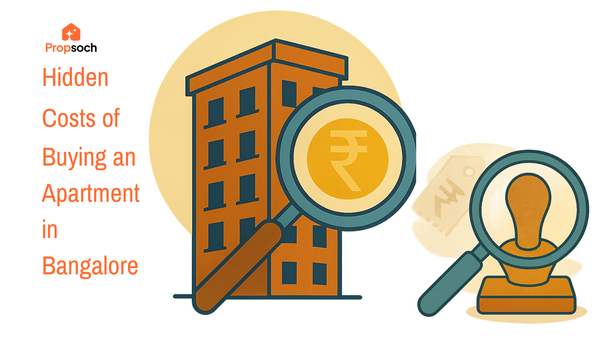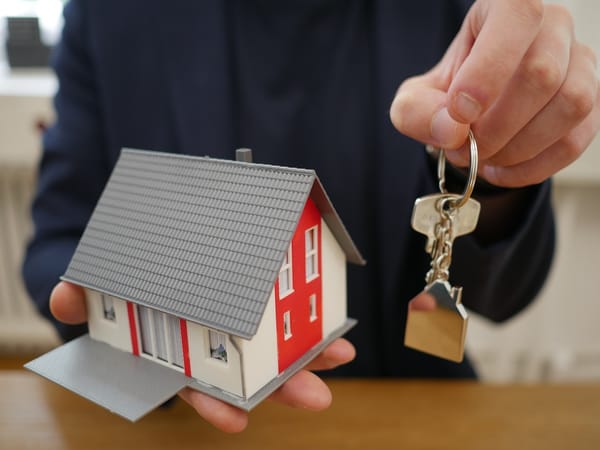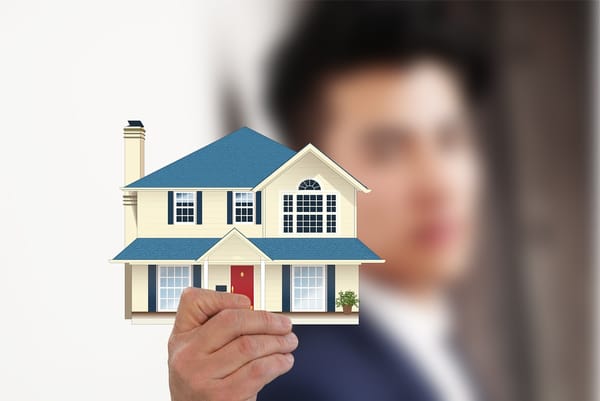Bangalore Traffic: It was Monday morning and I was already running late. Not just "oops-I-missed-the-bus" late, but "my-boss-is-going-to-throw-a-laptop-at-me" late. I gripped the steering wheel, my trusty Toyota manoeuvring through honking cars, sputtering auto-rickshaws and the occasional bewildered cows. Just when I thought I'd escaped KR Puram, I hit it – the Silk Board Junction. Time seemed to stretch like a bad dream, I swear I saw a leaf drifting by as I crept forward at a pace so slow even a turtle would give me the side-eye.
Welcome to Bangalore, my friend, where traffic is not just a mode of transport but actually an endurance test.
You wouldn’t believe it (or probably will) if I told you that Bangalore has a Traffic Congestion Index (TCI) of 32.61, placing it 13th in the global traffic congestion rankings. According to the TomTom Traffic Index 2023, drivers here spend an average of 28 minutes and 10 seconds to travel just 10 kilometers. To put that in perspective, that's taking about an extra 132 hours a year spent idling in traffic during peak hours. And as you sit there, creeping forward at a snail’s pace, you start wondering: Why….why didn’t I think about this when I was choosing where to live?
It’s exactly this madness that leads us to a crucial point: location.
After I finally found a perfect apartment in Nagavara with a spacious balcony and the dream kitchen, I then realized that my daily commute involved a soul-crushing battle with road rage. Now, I'm not saying you should give up on the dream apartment you’ve set your heart on. But what if there was a way to balance the dream with a practical location?
That's where this blog can be your perfect guide where I’m not just going to whine about Bangalore traffic (though we'll do a bit of that too, because sometimes you just need to vent) but will equip you with the knowledge to make intelligent choices when it comes to finding your dream home.
We'll delve into the why, the where, and the how of Bangalore's traffic woes, explore the best and worst areas to live in and even uncover some potential solutions to this age-old problem. So, grab a strong cup of filter coffee (you'll need it), put on your detective hat, and let's decode this together!
The Reality of Bangalore Traffic
Have you seen those old pictures of Bangalore, with its tree-lined streets and laid-back vibe? Yeah, those were the days.
Did you know that Bangalore was historically called a "Garden City”? But its transformation to a bustling metropolis has been dramatic with the sudden IT boom. As of the 2011 Census, nearly 44.3 lakh (4.43 million) people in Bangalore were welcomed as migrants, majorly drawn by the promise of job opportunities.
It was since then that the lack of foresight in urban planning and the limitations of public transportation started contributing to the severe traffic congestion. Also, Bangalore's unique topography with valleys and hills, government offices in the heart and increasing residential and commercial centres, started making the situation worse.
The rapid urbanization, with population density increasing from 2,985 people per square kilometre in 2001 to 4,378 in 2011, has only exacerbated these issues.

The TomTom Traffic Index 2024 actually ranks Bangalore as India's third slowest city, and the 2023 index places it as the 6th worst city in the world for traffic! But why is Bangalore traffic so notorious?
Well, it's a combination of factors:
- Rapid population growth: Bangalore is a magnet for job seekers and entrepreneurs, which is leading to a population explosion that the city's infrastructure struggles to keep up with.
- Narrow streets: Many of Bangalore's roads are not designed to handle the current volume of traffic, leading to congestion like KR Puram and Silk Board Junction.
- The double-decker flyover has undoubtedly improved traffic flow at Silk Board Junction but the situation is still not workable in peak hours due to its convergence from BTM Layout, Madiwala, Electronic City, and HSR Layout.
- Public transport: While the metro system is expanding, its progress has been slow. The bus system, though extensive, can be overcrowded and unreliable during peak hours. Alternative transport options like ride-sharing services are gaining popularity but haven't significantly alleviated the overall congestion.
- Several major infrastructure projects and road widening initiatives are currently in progress across the city. One such project includes the construction of nearly 100 kilometres of signal-free corridors at 17 key locations, which is expected to improve traffic flow in the future. Additionally, a proposed 54.5-km network of tunnel roads is being planned. While these projects hold great promise for smoother traffic in the long term, the ongoing construction has contributed to increased congestion in the short term.
For anyone living in Bangalore, this raises a crucial question: Does all of this link to my decision when choosing a property here? - Keep reading to find out!
Why Traffic Matters When Buying Property in Bangalore?

This topic always reminds me of my friend Shae who’d walk into the office every morning, looking like she just fought a battle. She was always late and every time, she’d shake her head and say, “Outer Ring Road, again yaar!” The funny part? She had bought a place way out there because it seemed like a good deal—big apartment, cheap rent. But what she didn’t factor in was the endless traffic.
So, what’s the bigger picture here? Your daily commute and how it impacts your quality of life—trust me, it’s not something you want to overlook.
Now, let’s dig deeper into the bigger picture. How can this actually impact your investment?
- Property Values
- Properties in well-connected areas with shorter commute times are more desirable, leading to higher prices. People are willing to pay a premium to avoid the stress and time wasted in traffic. For instance, areas near the metro lines and the Peripheral Ring Road are becoming more expensive.
- Commute Depreciation and ROI
- One critical yet often overlooked consequence of purchasing property in traffic-heavy areas is a phenomenon known as "commute depreciation." This refers to the potential for property values to stagnate or even decline over time due to the negative impact of traffic congestion.
- For instance, properties near bottleneck areas like Silk Board Junction have either stagnated or seen lower returns on investment (ROI) compared to properties in less congested areas.
- Resale value
- Areas with persistent traffic problems may experience lower demand from potential buyers, making it harder to sell your property in the future.
- Investment and Development Potential
- Congested locations experience slower growth in terms of new projects or redevelopments due to difficulties in managing construction traffic and logistical challenges.
Bangalore’s Traffic Situation in Key Neighborhoods
Bangalore has a diverse range of neighborhoods, each with its own unique characteristics and traffic situation. So let’s have a closer look at some popular areas:
Bangalore Traffic Hotspots: Areas to Choose for a Smoother Commute
Laughter is the best medicine and that’s exactly how Bangaloreans have turned their traffic woes into comedic gold. One Twitter user perfectly captured the sentiment when they joked, "Interviewer: Where do you see yourself in five years from now? Me: At Silk Board, probably.” Too real, though 😂!
And let’s not forget the memes that are the soundtrack of Bangalore’s traffic jams. You’ve probably seen the one that says, "You could drive for 149 hours across Russia and still be in Russia... Just like you can in Bangalore traffic! 💯" Pretty much sums it up, right ✋?

But the impact of traffic on Bangalore goes beyond just funny memes. So let’s talk about how this traffic madness affects where you should (and shouldn't) buy property in Bangalore.
Areas Where Traffic Flows (Almost) Smooth
- Yelahanka: This northern suburb is a gem for those seeking a peaceful commute. It has wide roads, good connectivity to the airport and city center via NH 44, and proximity to major IT parks like Manyata Tech Park without much traffic headaches from other tech hubs.
- Traffic Data: Average speed during peak hours is around 25-30 km/h, significantly higher than the city average of 18 km/h. The upcoming Phase 2B extension of the Namma Metro's Blue Line is expected to further improve connectivity and reduce travel times.
- Kanakapura Road: This area offers a good balance of affordability, developing infrastructure, and relatively manageable traffic. The presence of NICE Road and the Outer Ring Road provides good connectivity to other parts of Bangalore.
- Traffic Data: Traffic density is moderate, with average commute times to the city center around 1-1.5 hours during peak hours. The upcoming Green Line metro extension is expected to significantly improve connectivity and reduce travel times.
- Areas near Upcoming Metro Lines: If you want to truly conquer Bangalore traffic, live near a metro station. Properties near upcoming metro lines, such as the Yellow Line in Electronic City and extensions in North Bangalore, are a smart investment. Areas near metro stations often have dedicated bus lanes and improved last-mile connectivity, which further ease traffic flow.
- North West Bangalore: This region offers a solution to Bengaluru's congestion problem with better air quality, greenery, and upcoming infrastructure projects worth ₹16,000 crore. Areas like Yeshwanthpur and Peenya are seeing significant development with improved road networks and upcoming metro connectivity.
- Traffic Data: Traffic volume is currently lower than in central areas and the planned infrastructure projects like Satellite Town Ring Road (STRR) will maintain relatively smooth traffic flow.
- Hennur Road: Traffic is generally manageable with average commute times to the city center around 1-1.5 hours.
- Frazer Town: This centrally located neighborhood offers a mix of residential and commercial properties with good connectivity and relatively less traffic congestion compared to other central areas.
- Anekal Main Road: Located in South Bangalore, Anekal Main Road offers good connectivity and relatively less traffic congestion compared to other areas.
If you're looking for a deeper understanding of each micromarket, read ‘State of Bangalore Real Estate Market 2025’ as this blog has a comprehensive analysis for you.
Traffic Blackspots to Avoid
- Silk Board Junction: Even with the new flyover, Silk Board remains a traffic nightmare. The sheer volume of vehicles converging at this junction, coupled with ongoing construction and pedestrian traffic, makes it one of the most congested areas in Bangalore.
- Traffic Data: Average travel time through this junction can be anywhere from 30 minutes to an hour during peak hours. The area also experiences high pedestrian traffic and limited parking.
- Rajamahal Extension, Hebbal flyover bridge: These areas are notorious for their high traffic density and frequent bottlenecks. Commute times can be unpredictable and the congestion can significantly impact your daily life. Road infrastructure in these areas is also often inadequate to handle the high traffic volume.
- Central Business District (CBD): Traffic flow in the CBD is slow-moving, with average speeds often below 20 km/h. Parking is also a major challenge, which adds to the congestion.
- KR Puram Hanging Bridge: This bridge is a crucial connection point between Old Madras Road and Outer Ring Road, but its narrow lanes and high traffic volume often result in accidents and long delays.
- Mysore Road Junction: This critical intersection point connects the city center with the southwestern parts of Bengaluru and its heavy traffic flow, coupled with inadequate infrastructure, often leads to congestion and delays.
- Tin Factory Junction: This vital intersection point connects Old Madras Road, KR Puram, and the Outer Ring Road. The lack of infrastructure to handle the high traffic volume often leads to long delays and traffic jams.
- Hebbal Flyover and Marathahalli Main Road: These major bottleneck in the northern part of Bengaluru faces traffic congestion due to high traffic density and narrow lanes.
The colour scheme helps visually distinguish the varying levels of congestion, from "Extremely High" (red), “High” (yellow), “Moderate (dark green), to "Low to Moderate" (light blue).
Key Considerations When Choosing a Property in Bangalore (Traffic-wise)

So people, when choosing a place to live in Bangalore, minimizing the impact of traffic should be a top priority. Here are some key considerations for you:
- Proximity to Workplace: You and your spouse both need to consider their commute preferences, and how much remote work both of you have. You need to essentially define, how much commute is too much commute before I pull my hair out.
- Accessibility and Connectivity: Evaluate the accessibility of a neighborhood in terms of road networks, public transportation options, and proximity to major highways. Look for areas with well-connected roads, access to metro lines, and frequent bus services. HSR Layout, Basavanagudi, and Jayanagar are good starting points.
- Walkability: Choose a location that promotes walkability, allowing you to run errands, access amenities, and commute to work on foot. Studies have shown a link between the number of intersections around a home and the likelihood of residents choosing to walk. This suggests that neighborhoods with a higher density of intersections and amenities tend to be more walkable.
- Traffic Patterns: Research the traffic patterns in different areas, especially during peak hours. Use online resources like Google Maps or the TomTom Traffic Index to get real-time traffic updates and identify areas with persistent congestion.
- Future Developments: Consider upcoming infrastructure projects and urban planning initiatives that may impact traffic flow in the future. Look for areas with planned metro lines, road widening projects or other initiatives aimed at improving traffic conditions.
- Commuting and Housing Choices: When considering a move, it's essential to evaluate the trade-offs between housing costs, your current commute time and identify pain points.
So Here’s a Fun Checklist for You
Before you fall in love with that perfect apartment or that charming villa, take a deep breath and ask yourself these crucial questions:
- Can I actually live here? Will you be spending a significant chunk of your life just getting to and from this place? Factor in your work location, school runs, and those weekend trips to meet friends.
- Is this commute soul-crushing or energizing? Does it fill you with dread or can you see yourself using that time productively (listening to podcasts, catching up on calls)?
- Is there any nearest metro? Even if it's not on your doorstep, check if there are upcoming lines planned for the area.
- Honk if you don't want to live here! Do you envision yourself relaxing on your balcony with a cup of chai or will the constant honking drive you crazy?
- Do the locals have positive views on the traffic situation? Talk to residents in the area and get their honest opinions. They'll have the inside scoop on peak hours, alternative routes, and those unexpected traffic snarls that even Google Maps can't predict.
- Can I handle the worst-case scenario? Think about those days when everything goes wrong – torrential rain, festivals, VIP movements, or those infamous "just because it's Bangalore" traffic jams. Can you handle the added stress and delays?
If you answered more than three of these with a "no," it's time to reconsider your options!
For a comprehensive guide to buying your dream home, explore Propsoch’s detailed checklist and homebuying guide!
Bangalore Traffic: Future Solutions
While Bangalore's traffic situation might seem like an insurmountable challenge, there are some proposed solutions that offer a glimmer of hope to all Bangloreans:
And there’s hope!
With a multi-pronged approach combining infrastructure, tech, and a little patience, we might just see the day when we stop using "Silk Board traffic" as a universal excuse for being late.
Don't Let Bangalore Traffic Drive You Crazy!
Sometimes, it feels like Bangalore traffic has a mind of its own. One minute you're cruising along, enjoying the scenery and the next you're stuck in a sea of vehicles, wondering if you'll ever reach your destination.
But hey, we're Bangaloreans, and we're known for our resilience and our ability to find humour in the most challenging situations. So, the next time you're stuck in traffic, take a deep breath, put on some music, and remember that you're not alone. We're all in this together, navigating the roads (and the potholes!) of this vibrant city.
Now, after the whole lecture if you’re still wondering where to live without falling into the same traffic trap, don’t worry—Propsoch has got your back. We promise, no more ‘hours spent in traffic’ stories... unless you’re caught in one of those ‘just because it’s Bangalore’ jams!’
At Propsoch, we help you make intelligent homebuying decisions by taking the heavy lifting on us:
- Property Search and Shortlisting: With Propsoch, you can browse over 2 lakh properties in Bangalore, filtering by location, budget, traffic conditions, amenities, future development plans, and so much more.
- In-depth Property Analysis: We provide detailed reports on each property, analyzing over 80 data points to help you understand the pros and cons of each location.
- Expert Guidance: Our team of wizards—architects and market experts—offer unbiased advice and support, ensuring you make the most informed decisions every step of the way.
So, ditch the traffic woes and embrace a smarter way to find your dream home with Propsoch.
And who knows, maybe one day we'll all be laughing about Bangalore traffic in the past tense while zipping around in flying cars (or at least on a fully functional metro system!)
Stay tuned for more insights, tips, and, of course, a little humour along the way. Until next time, happy homebuying!
Stay updated and engaged with us for more expert insights and tips:
- Follow us on Instagram
- Subscribe to us on YouTube
- Connect with us on LinkedIn
- Join our WhatsApp Community
Bangalore Traffic: FAQs
Q: Why is Bangalore traffic so bad?
A: Bangalore's traffic congestion is a result of rapid population growth, narrow roads, inadequate public transport, and a high dependence on private vehicles.
Q: What are the worst traffic areas in Bangalore?
A: Some of the most congested areas include Silk Board Junction, Outer Ring Road (ORR), KR Puram Bridge, Hebbal Flyover, and the Central Business District (CBD).
Q: How does traffic affect property prices in Bangalore?
A: Properties in congested areas may see lower appreciation or even depreciation in value due to decreased demand and increased commute times.
Q: What are some common misconceptions about Bangalore traffic?
A: Many people believe that traffic is only bad in the IT corridors, but congestion exists throughout the city.
Q: How can I find out about upcoming infrastructure projects that might affect traffic?
A: Check the websites of government agencies like the Bangalore Metro Rail Corporation Limited (BMRCL) and the Bruhat Bengaluru Mahanagara Palike (BBMP) for updates on planned projects.
Q: Which are the best areas to live in Bangalore with less traffic?
A: Consider areas like Yelahanka, Kanakapura Road, North West Bangalore (Yeshwanthpur, Peenya), and areas near upcoming metro lines.
Q: What are some solutions to Bangalore's traffic problem?
A: Proposed solutions include signal-free corridors, tunnel roads, improved public transport, stricter lane discipline, staggered work timings, multi-level parking facilities, and AI-powered traffic management.
Q: How can I check traffic conditions in real-time?
A: Use traffic apps like Google Maps, Waze, and the TomTom Traffic Index to get real-time updates and plan your commute.
Q: Is Bangalore's traffic worse than other Indian cities?
A: Yes, Bangalore consistently ranks among the most congested cities in India and even globally after Kolkata.
Q: What are the peak traffic hours in Bangalore?
A: Peak hours are typically from 7 am to 11 am and 4 pm to 9 pm on weekdays.
Q: What are the long-term implications of Bangalore's traffic congestion?
A: If not addressed effectively, traffic congestion can hinder economic growth, impact property values, and reduce the city's overall livability.
Q: How can Propsoch help me find a property in Bangalore with less traffic?
A: Propsoch offers property search and shortlisting, in-depth property analysis, expert guidance, and neighborhood insights to help you make informed decisions about your property investment, considering traffic conditions and other factors.









